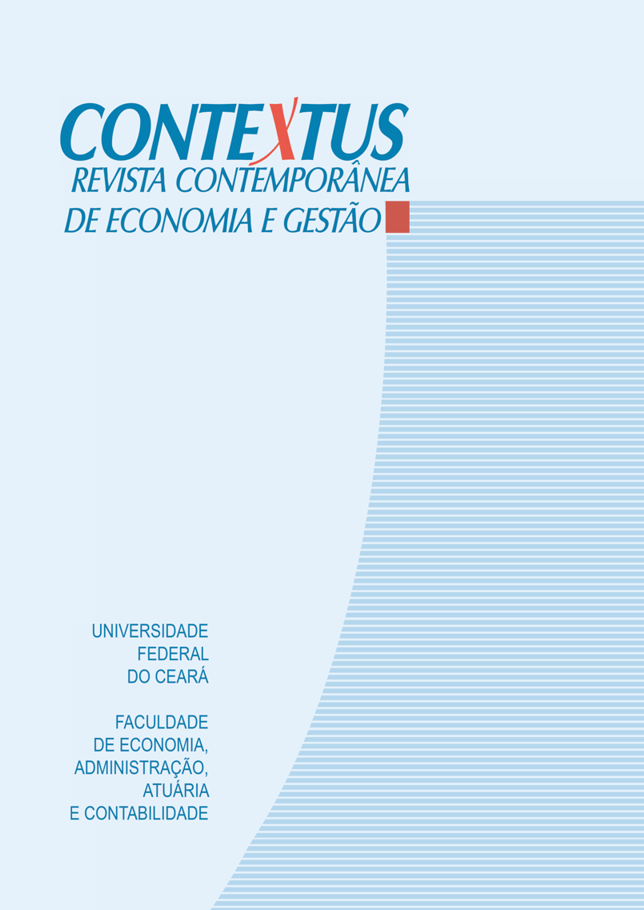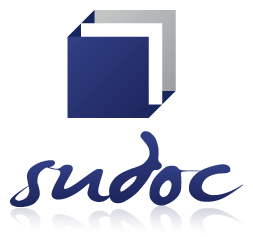El impacto de la transformación digital y la industria 4.0 en aspectos de valor: evidencia de una meta-síntesis
DOI:
https://doi.org/10.19094/contextus.2020.43717Palabras clave:
transformación digital, industria 4.0, valor, meta-síntesis, estudios de casoResumen
Utilizamos el enfoque de meta-síntesis para analizar estudios de caso cualitativos donde se explora la relación entre valor y transformación digital/industria 4.0. El objetivo es proporcionar contribuciones que vayan más allá de las encontradas en los estudios originales, proporcionando así nuevas ideas a partir de los resultados de los estúdios. Los resultados demuestran que el valor se exploró en dos dimensiones: modelos de negocios y cadenas de valor. Sin embargo, descubrimos que los estudios tienden a descuidar los puntos críticos de la industria 4.0 para explorar el valor. Esta meta-síntesis demuestra que los estudios deben abordar un escenario más amplio, que también trata aspectos de la co-creación de valor y considera aspectos del ecosistema donde las organizaciones se insertan para comprender aspectos de la captura de valor. Concluimos brindando instrucciones para futuras investigaciones basadas en el metanálisis de los estudios revisados.
Citas
Arnold, C., Kiel, D., & Voigt, K. (2017). Innovative business models for the industrial internet of things. BHM Berg- und Hüttenmännische Monatshefte, 162(9), 371-381. https://doi.org/10.1007/s00501-017-0667-7
Arribas, V., & Alfaro, J. A. (2017). 3D technology in fashion: From concept to consumer. Journal of Fashion Market and Management, 22(2), 240-251. https://doi.org/10.1108/JFMM-10-2017-0114
Baden-Fuller, C., & Haefliger, S. (2013). Business model and technological innovation. Long Range Planning, 46, 419-426. https://doi.org/10.1016/j.lrp.2013.08.023
Barney, J. B. (1991). Firm resources and sustained competitive advantage. Journal of Management, 17(1), 99-120. https://doi.org/10.1177%2F014920639101700108
Bowman, C., & Ambrosini, V. (2000). Value creation versus value capture: towards a coherent definition of value in Strategy. British Journal of Management, 11(1), 1-15. https://doi.org/10.1111/1467-8551.00147
Burmeister, C., Lüttgens, D., & Piller, F. T. (2016). Business model innovation for industry 4.0: Why the "industrial internet" mandates a new perspective on innovation. Die Unternehmung: Swiss Journal of Business Research and Practice, 70(2), 124-152. https://doi.org/10.5771/0042-059X-2016-2-124
Cassandras, C. G. (2017). Automating mobility in smart cities. Annual Reviews in Control, 44, 1-8. https://doi.org/10.1016/j.arcontrol.2017.10.001
Davies, I., & Chambers, L. (2017). Integrating hybridity and business model theory in sustainable entrepreneurship. Journal of Cleaner Production, 177, 378-386. https://doi.org/10.1016/j.jclepro.2017.12.196
Brito, R. P., & Brito, L. A. L. (2012). Vantagem competitiva, criação de valor e seus efeitos sobre desempenho. RAE - Revista de Administração de Empresas, 52(1), 70-84. https://doi.org/10.1590/S0034-75902012000100006
Docherty, I., Marsden, G., & Anable, J. (2018). The governance of smart mobility. Transportation Research Part A: Policy and Practice, 115, 114-125. https://doi.org/10.1016/j.tra.2017.09.012
Fatorachian, H., & Kazemi, H. (2018). A critical investigation of Industry 4.0 in manufacturing: theoretical operationalization framework. Production Planning & Control, 29(8), 633-644. https://doi.org/10.1080/09537287.2018.1424960
Geritz, L. (2016). Design Management as a domain of smart and sustainable enterprise: business modeling for innovation and smart growth in industry 4.0. The International Journal of Entrepreneurship and Sustainability Issues, 3(3), 244-268. https://doi.org/10.9770/jesi.2016.3.3(3)
Gregor, T.; Krajcovic, M., & Wiecek, D. (2017). Smart connected logistics. Procedia Engineering, 192, 265-270. https://doi.org/10.1016/j.proeng.2017.06.046
Grönroos, C. (2008). Service logic revisited: who creates value? And who co-creates? European Business Review, 20(4), 298–314. https://doi.org/10.1108/09555340810886585
Grönroos, C., & Voima, P. (2013). Critical service logic: making sense of value creation and co-creation. Journal of the Academy of Marketing Science, 41(2), 133-150. https://doi.org/10.1007/s11747-012-0308-3
Helkkula, A., Kelleher, C., & Pihlström, M. (2012). Characterizing value as an experience: implications for service researchers and managers. Journal of Service Research, 15(1), 59-75. https://doi.org/10.1177/1094670511426897
Hofmann, E., & Rusch, M. (2017). Industry 4.0 and the current status as well as future prospects on logistics. Computers in Industry, 89, 23-34. https://doi.org/10.1016/j.compind.2017.04.002
Hoon, C. (2013). Meta-synthesis of qualitative case studies: an approach to the building. Organizational Research Methods, 16(4), 522-556. https://doi.org/10.1177/1094428113484969
Ito, N. C., Hayashi, P., Jr., Gimenez, F. A. P., & Fensterseifer, J. E. (2012). Valor e vantagem competitiva: buscando definições, relações e repercussões. RAC - Revista de Administração Contemporânea, 16(2), 290-307. https://doi.org/10.1590/S1415-65552012000200008
Jerman, A., Erenda, I., & Bertoncelj, A. (2019). The influence of critical factors on business model at a smart factory: a case study. Business Systems Research Journal, 10(1), 42-52. https://doi.org/10.2478/bsrj-2019-0004
Kagerman, H., Wahlster, W., & Helbig, J. (2013). Recommendations for implementing the strategic initiative Industry 4.0. Final report of the Industry 4.0 Working Group 2013. Frankfurt: Communication Promoters Group of the Industry-Science Research Alliance. https://www.din.de/blob/76902/e8cac883f42bf28536e7e8165993f1fd/recommendations-for-implementing-industry-4-0-data.pdf
Khaitan, S. K., & McCalley, J. D. (2015). Design techniques and applications of cyberphysical systems: a survey. IEEE Systems Journal, 9(2), 350-365. https://doi.org/10.1109/JSYST.2014.2322503
Kiel, D., Arnold, C., & Voigt, K. (2017). The influence of the industrial internet of things on business models of established manufacturing companies – a business level perspective. Technovation, 68, 4-19. https://doi.org/10.1016/j.technovation.2017.09.003
Lecocq, X., Demil, B., & Warnier, V. (2006). Le business model, un outil d’analyse stratégique. L’Expansion Management Review, 123, 96-109. https://doi.org/10.3917/emr.123.0096
Liao, Y., Deschamps, F., Loures, E. de F. R., & Ramos, L. F. P. (2017). Past, present and future of Industry 4.0 - a systematic literature review and research agenda proposal. International Journal of Production Research, 55(12), 3609-3629. https://doi.org/10.1080/00207543.2017.1308576
Lichtenhaler, U. (2017). Shared value innovation: linking competitiveness and societal goals in the context of digital transformation. International Journal of Innovation and Technology Management (IJITM), 14(4), 1-14. https://doi.org/10.1142/S0219877017500183
Lilis, G., & Kayal, M. (2018). A secure and distributed message oriented middleware for smart building applications. Automation in Construction. 86, 163-175. https://doi.org/10.1016/j.autcon.2017.10.030
Marx, K. (1990). Capital: a critique of political economy. London: Penguin Books. (Original published in: 1867).
Morais-da-Silva, R. L., Takahashi, A. R. W., & Segatto, A. P. (2016). Scaling up social innovation: a meta-synthesis. Mackenzie Management Review (RAM), 17(6), 134-163. https://doi.org/10.1590/167869712016/administracao.v17n6p134-163
Miles, M. B., & Huberman, A. M. (1994). Qualitative data analysis: An expanded sourcebook. 2 ed. London: Sage.
Mishra, D. P., Heide, J. D., & Sort, S. G. (1998). Information asymmetry and levels of agency relationships. Journal of Marketing Research, 35(3), 277–295. https://doi.org/10.2307/3152028
Müller, J. M. (2019). Business model innovation in small- and medium-sized enterprises: Strategies for industry 4.0 providers and users. Journal of Manufacturing Technology Management, 30(8), 1127-1142. https://doi.org/10.1108/JMTM-01-2018-0008
Müller, J. M., Buliga, O., & Voigt, K. (2018). Fortune favors the prepared: How SMEs approach business model innovations in Industry 4.0. Technological Forecast & Social Change, 132, 2-17. https://doi.org/10.1016/j.techfore.2017.12.019
Oesterreich, T., & Teuteberg, G. (2016). Understanding the implications of digitisation and automation in the context of Industry 4.0: A triangulation approach and elements of a research agenda for the construction industry. Computers in Industry, 83,121-139. https://doi.org/10.1016/j.compind.2016.09.006
Orlandi, L. B. (2016). Organizational capabilities in the digital era: Reframing strategic orientation. Journal of Innovation & Knowledge, 1, 156-161. https://doi.org/10.1016/j.jik.2016.01.002
Osterwalder, A., & Pigneur, Y. (2010). Business model generation: a handbook for visionaries, game changers, and challengers. Hoboken NJ: John Wiley and Sons.
Park, C., Kim, H., & Yong, T. (2017). Dynamic characteristics of smart grid technology acceptance. Energy Procedia, 128, 187-193. https://doi.org/10.1016/j.egypro.2017.09.040
Pesce, D., Neirotti, P., & Paoilucci, E. (2019). When culture meets digital platforms: value creation and stakeholder's alignment in big data use. Current Issues in Tourism, 22(15), 1883-1903. https://doi.org/10.1080/13683500.2019.1591354
Peteraf, M. A. (1993). The cornerstones of competitive advantage: a resource based view. Strategic Management Journal, 14(3), 179-191.
Pitelis, C. (2009). The co-evolution of organizational value capture, value creation and sustainable advantage. Organization Studies, 30(10), 1115-1139. https://doi.org/10.1177/0170840609346977
Porter. M. E. (1996). What is Strategy? Harvard Business Review, 74(6), 61-78.
Porter, M. E., & Heppelmann, J. E. (2015). How smart, connected products are transforming companies Harvard Business Review, 93(10), 96-114.
Porter, M. E., & Millar, V. E. (1985). How information gives you competitive advantage. Harvard Business Review. July. https://hbr.org/1985/07/how-information-gives-you-competitive-advantage
Rumelt, R. P. (1984). Towards a strategic theory of the firm. In R. B. Lamb (Ed.), Competitive strategic management (pp. 556-570). Prentice Hall: Englewood Cliffs.
Sánchez-Fernánzes, R., & Iniesta-Bonilla, Á. M. (2007). The concept of perceived value: a systematic review of the research. Marketing Theory, 7(4), 427-451. https://doi.org/10.1177/1470593107083165
Shin, D. (2017). An exploratory study of innovation strategies of the internet of things SMEs in South Korea. Asia Pacific Journal of Innovation and Entrepreneurship, 11(2), 171-189. https://doi.org/10.1108/APJIE-08-2017-025
Spath, D. O., Ganschar, S., Gerlach, M., Hammerle, T., Krause, T., & Schlund, S. (2013). Produktionsarbeit Der Zukunft—Industrie 4.0 [Production Work of the Future—Industry 4.0]. Stuttgart: Fraunhofer IAO.
Teece, D. J. (2014). A dynamic capabilities-based entrepreneurial theory of the multinational enterprise. Journal of International Business Studies, 45, 8-37. https://doi.org/10.1007/978-1-137-54471-1_9
Teece, D. J. (2018a). Business models and dynamic capabilities. Long Range Planning, 51(1), 40-49. https://doi.org/10.1016/j.lrp.2017.06.007
Teece, D. J. (2018b). Profiting from technological innovation the digital economy: Enabling technologies standards, and licensing models in the wireless world. Research Policy, 47(8), 1367-1387. https://doi.org/10.1016/j.respol.2017.01.015
Teece, D. J., & Linden, G. (2017). Business models, value capture, and the digital enterprise. Journal of Organization Design, 6(8). https://doi.org/10.1186/s41469-017-0018-x
Vieira, E. S., & Gomes, J. A. N. F. (2009). A comparison of Scopus and Web of Science for a typical university. Scientometrics, 81, 587-600. https://doi.org/10.1007/s11192-009-2178-0
Weber, R. H. (2013). Internet of things - Governance quo vadis? Computer Law and Security Review, 19(4), 341-347. https://doi.org/10.1016/j.clsr.2013.05.010
Xu, L., Xu, E., & Li, L. (2018). Industry 4.0: state of the art and future trends. International Journal of Production Research, 56(8), 2941-2962. https://doi.org/10.1080/00207543.2018.1444806
Zeng, J., Simpson, C., & Dang, B. (2017). A process model of dynamic capability development: evidence from the Chinese manufacturing sector. Management and Organizational Review, 13(3), 643-673. https://doi.org/10.1017/mor.2016.42
Publicado
Cómo citar
Número
Sección
Licencia
Os autores, no ato da submissão, aceitam a declaração abaixo:
Nós autores mantemos sobre nosso artigo publicado os direitos autorais e concedemos à revista Contextus o direito de primeira publicação, com uma licença Creative Commons na modalidade Atribuição – Não Comercial 4.0 Internacional, a qual permite o compartilhamento com reconhecimento da autoria e da publicação inicial nesta revista.
Temos ciência de estarmos autorizados a assumir contratos adicionais separadamente, para distribuição não exclusiva da versão do trabalho publicada nesta revista (ex.: publicar em repositório institucional ou como capítulo de livro), também com reconhecimento tanto da autoria, quanto da publicação inicial neste periódico.
Atestamos que o artigo é original ou inédito, não foi publicado, até esta data, em nenhum periódico brasileiro ou estrangeiro, quer em português, quer em versão em outra língua, nem está encaminhado para publicação simultânea em outras revistas.
Sabemos que o plágio não é tolerado pela revista Contextus e asseguramos que o artigo apresenta as fontes de trechos de obras citadas, incluindo os de qualquer trabalho prévio produzido e publicado pelos próprios autores.









3.png)


1.jpg)



1.jpg)


1.jpg)






.jpg)



1.jpg)

1.jpg)


1.jpg)

1.jpg)
1.jpg)
2.png)




1.jpg)
2.jpg)

1.jpg)





1.jpg)


1.jpg)
1.jpg)
